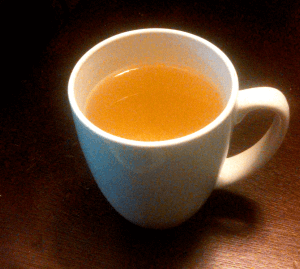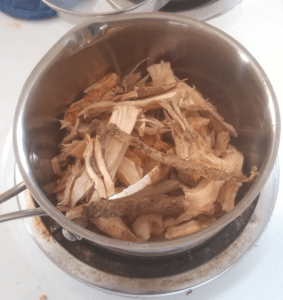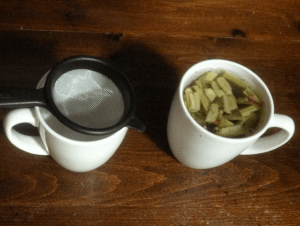
Many of our readers find that subscribing to Eat The Planet is the best way to make sure they don’t miss any of our valuable information about wild edibles
CLICK HERE to skip down to the Wild Edible Tea Index
The Value of Wild Edible Teas

Many commercial teas share a single primary ingredient, leaves of the tea plant (Camellia sinensis). The truth is that nature has provided us with tens of thousands of plants that can be made into a vast assortment of beverages with a huge variety of health benefits, aromas, flavors, and consistencies. Eat The Planet is dedicated to introducing people to the benefits and potential uses of these wild edibles. Most of the herbs mentioned in the Wild Edible Tea Index at the bottom of the page are accessible to a large number of people, either in the wild or from specialized herbal stores.
Preparation Methods
Making beverages from wild edibles is an art as much as a science. The most important thing is to identify your herbs correctly and understand their health benefits and potential risks, if any. The second most important thing beneath that is a love for nature, experimentation and creativity. The preparation methods explained below are guidelines based on my own firsthand experiences of what I have found to be the easiest and most effective methods of preparing beverages from wild edibles.
There are a number of factors influencing your final product. These are a few considerations to keep in mind when creating your herbal teas:
- Will you use single or multiple herbs, and in what quantities (for maximum control over taste and texture prepare all herbs singly and mix them afterwards)
- When and how long to apply heat, if at all (heat may help transfer components from herbs to water)
- Will you serve your beverage hot or cold
- Weather to dilute the beverage, or mix the beverage with another (for a medicinal dose use a more concentrated liquid, but make sure you understand possible health risks, if any)
- Will you add any sweeteners like sugar, honey, or maple syrup
Consider how these factors will affect your final product. Changing these factors can make a big difference and give you many options to work with. There is one rule of thumb for almost all preparations which is the more you chop up, or mash the herb the more surface area will be available to leech the herbal components into the water( I would recommend using a mortar and pestle).

Cooked Tea
One way to make an herbal beverage is to boil the herbs in water, then strain through a cloth or fine strainer to catch all the large pieces. Most herbs only need to be cooked for a few minutes to release the flavors and aromas into the water. Some things like Sassafras root or Smilax root should be cooked for a little longer (about 15-30 minutes) depending on how concentrated you want the resulting liquid.
Some herbs lose their nutritional or medicinal properties when cooked, for example: pine needles contain vitamin C which gets broken down during cooking. Most leafy plants and plant parts don’t need to be cooked, but heat can still play a part in processing them into an herbal tea. In this case they should be steeped in hot water.
Steeped Tea

Steeping herbs in hot water can be a good way to transfer components to the water without destroying beneficial ones. The water can be boiled first or to make a single cup, microwaved. One traditional way of steeping tea is to buy a mesh tea ball and steep for a few minutes. I have found that with many wild edibles, including small branches and whole leaves, it is easier to just put the herbs right in a cup or pot, you should have 2 to 4 times more water than herbs by volume. Then let it steep. The time it steeps can range dramatically from a few minutes to about a half hour. The final stage is to pour the beverage into another cup or large container with a tea strainer, or any other fine mesh strainer.
Sometimes cooking or even heating releases unwanted flavors into your tea, for example if Staghorn Sumac berries are heated in water some of the bitter flavors from the stem leech into the water. In this case an infusion would be your best option.
Infused Tea

An herbal infusion is used when you want to retain color, nutrients, and impart milder flavors from the herbal source into your beverage. Certain fruits like staghorn sumac, and most flowers are typically infused when using them in tea making. A cold infusion is made by simply placing the herbs in a container(usually glass) with water for a certain period of time. Infusing takes quite a bit longer than cooking or steeping. The infusion time can range from a few hours to a few days, and can either be in room temperature or refrigerated. I have found that refrigeration works well, I can keep the herbs in the tea until I have finished drinking it, usually a week or two. If you choose to infuse in room temperature for longer than 2-3 days keep an eye out for mold growing on your herbs.
Infusion can also be done after either cooking or steeping. If you want a stronger flavor, simply leave the herbs in the liquid and keep refrigerated. From what I have seen this is not a common practice but I have found it works well for me. I keep my small tea strainer handy and use it to filter out large pieces every time I pour a glass.
A Final Word On Wild Edible Tea Making
Wild edible tea making is an area of foraging and natural eating that I had often overlooked. Since I started experimenting with making herbal beverages it has become a very exciting part of my experience with wild edibles. I hope you enjoy this process as much as I do, and feel free to post some of your recipes below.
Wild Edible Tea Index
(Click on species for more general information)Acer saccharum | Sugar Maple | Part: sap | Properties: Sweetener, Maple Syrup Flavor
Genus:Amelanchier | Service Berry | Part: Berry | Properties: Sweetener
Artemisia vulgaris | Mugwort | Part: leaves | Properties: Bitter, Induces Vivid Dreams | Cautions: Possible Toxins
Berberis thunbergii | Japanese Barberry | Part: Berry | Properties: Bitter, Slight Sweetener
Genus:Betula | Birch | Part: sap | Properties: Sweetener, Syrup-like Flavor
Betula lenta | Sweet Birch | Part: twigs | Properties: Birch-Beer Flavor
Genus: Carya | Hickory | Part: sap | Properties: Syrup-like Flavor
Cichorium intybus | Chicory | Properties: Bitter, Nutritional Suppliment
Corylus avellana | Hazelnut | Part: Nut | Properties: Thickener
Elaeagnus umbellata | Autumn Olive | Part: Berry | Properties: Sweetener, Tart Flavor
Fallopia japonica | Japanese Knotweed | Part: Young Stems | Properties: tart flavor
Genus:Ganoderma | Ganoderma Shelf Mushroom | Properties: Powerful Antioxidants and Many Other Health Benefits
Hibiscus syriacus | Rose of Sharon | Properties : Thickener, Lowers blood pressure
Juniperus virginiana | Eastern Red Cedar | Part: Berry | Properties: Bitter, Aromatic, Cold Treatment | Cautions: Possible Toxins
Lindera benzoin | Spicebush | Part Berries | Properties: Unique Flavor
Genus:Magnolia | Magnolia | Part: buds | Properties: Very Strong Tea-like Flavor
Monarda didyma | Bee Balm | Properties: Bitter, Mint/Tea-Like Flavor
Genus: Morus | Mulberry | Part: Berry | Properties: Sweetener
Nyssa sylvatica | Black Tupelo | Part: Berry | Properties: Tart Flavor
Genus:Picea | Spruce | Properties: Evergreen-like Flavor
Genus:Picea | Spruce | Properties: Evergreen-like Flavor
Genus:Pinus | Pine | Properties: Evergreen-like Flavor
Genus:Plantago | Yard Plaintain | Properties: Bitter, Nutritional Suppliment
Platanus occidentalis | Sycamore Tree | Part: Flakey Outer-Bark | Properties: Cofee Substitute
Genus:Prunus | Wild Cherry | Part: Fruit | Properties: Bitter, Sweetener
Genus:Rosa | Rose | Part: Hips(berries) | Properties: Sweetener, Unique Flavor | Cautions: Irritable Hairs
Genus:Rosa | Rose | Part: Flowers, Leaves | Properties: Mild Flavor
Rhus typhina | Staghorn Sumac | Part: Berry Cluster | Properties: Lemonade-Like Flavor
Genus Rubus | Wild Raspberry/Blackberry | Part: leaves | Properties : Nutritional Suppliment, Tonic
Genus:Rubus | Wild Raspberry/Blackberry | Part: fruit | Properties : Sweetener
Sassafras albidum | Sassafras Root | Part: Root | Properties: Rootbeer-like Flavor, Calming Effect
Genus:Smilax | Greenbrier | Part: Root | Properties: Rootbeer-like Flavor
Solidago odora | Anise-Scented Goldenrod | Part: Leaves | Properties: Anise-like Flavor
Taraxacum officinale | Dandelion | Part: Root | Properties : Bitter, Nutritional Suppliment, Coffee-like Flavor
Taraxacum officinale | Dandelion | Part: leaves | Properties : Bitter, Nutritional Suppliment
Genus:Tilia | Linden Tree | Part: Flowers | Properties: Sweetener
Trametes versicolor | Turkey Tail Mushroom | Properties: Powerfull Antioxidants
Tsuga canadensis | Canadian Hemlock | Properties: Aromatic, Evergreen-like Flavor
Urtica dioica | Stinging Nettle | Part: leaves | Properties : Rich Flavor, Nutritious
Genus:Verbascum | Mullein | Part: leaves | Properties : Bitter, Treatment for Bronchial Ailments | Cautions: Toxins, Irritable Hairs
Viola sororia | Violet | Part: Tubers | Properties: Thickener
Viola sororia | Violet | Part: Flowers | Properties: purple color
Genus:Wisteria | Wisteria | Part: flowers | Properties : Honey-dew Flavor | Cautions: Toxic fruits
Many of our readers find that subscribing to Eat The Planet is the best way to make sure they don't miss any of our valuable information about wild edibles.
See our privacy policy for more information about ads on this site






